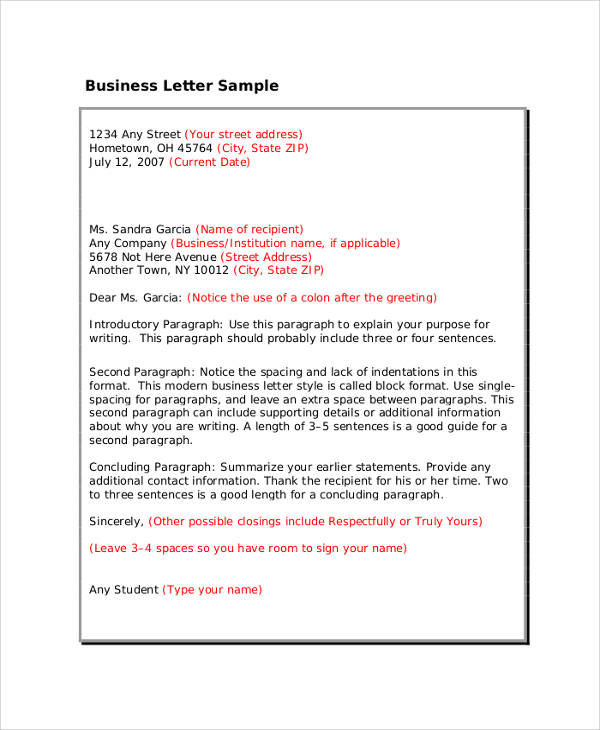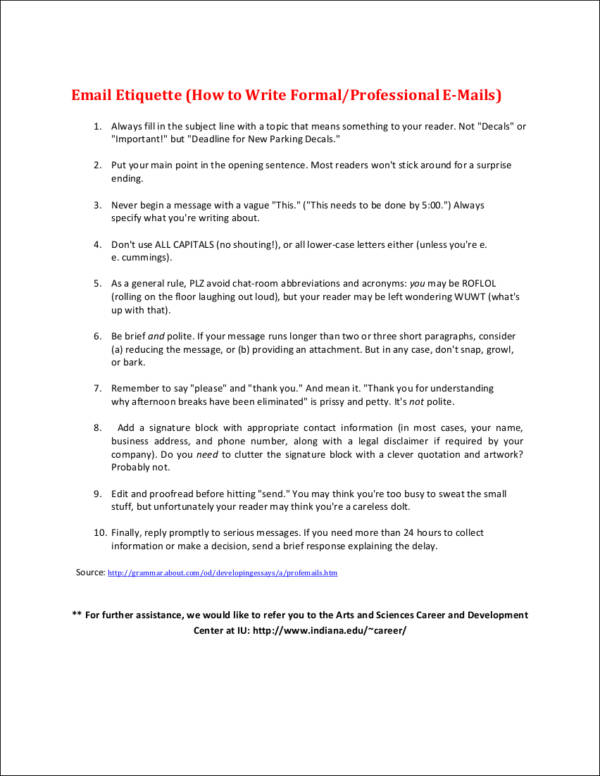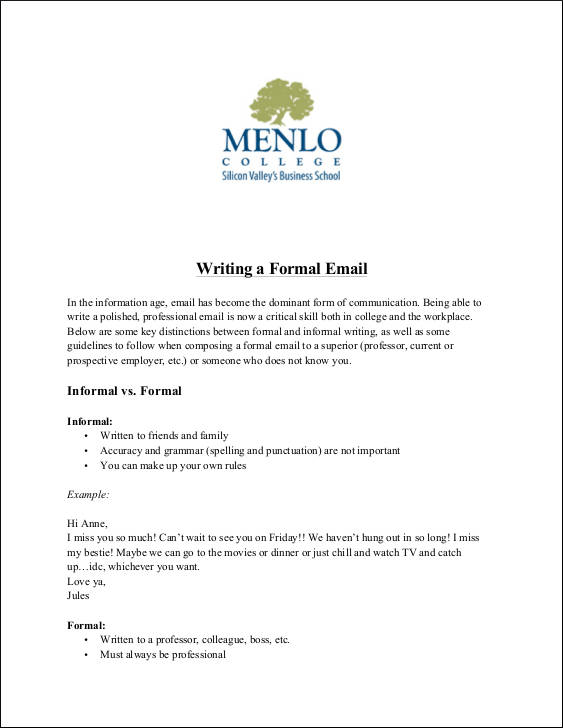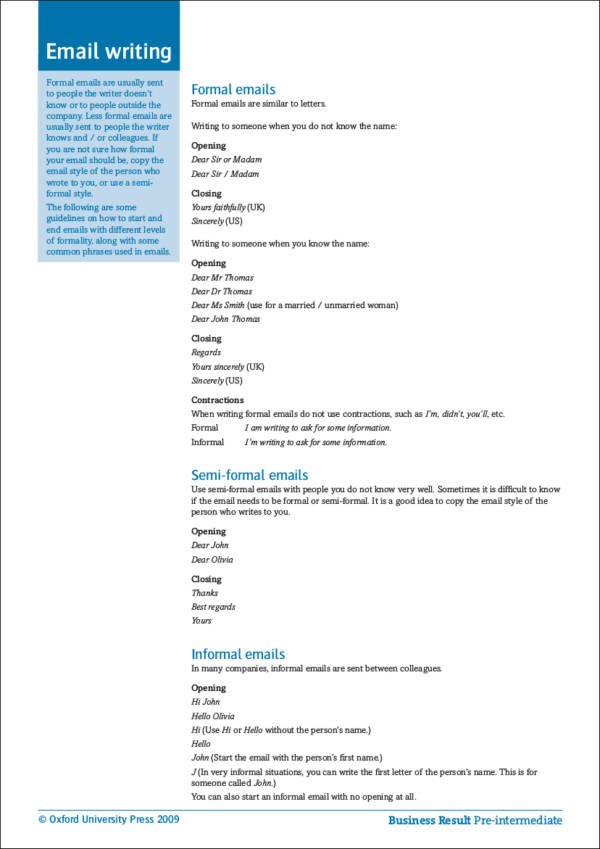There has always been a debate which platform of communication is most effective nowadays—printed letters or emails. In reality, there is no best way of communication since both are still used widely nowadays. Although emails are deemed to be a faster means of communication, there are also circumstances where a need for printed letters is of importance.
In a workplace or business setting, emails and printed letters are always present. However, whether you are writing an email or printed letters, there are writing guidelines that you need to follow to be able to properly convey the message to your recipient/recipients. In this post, we will be discussing some guidelines that you can follow as well as some great free letter samples that you can refer to when it comes to writing in a professional manner. Check out what we have for you!
Example Guide for Writing Professional Letters
This sample professional letter will give you a breakdown about how professional letters look like. The guidelines that are included in here are not just applicable to handwritten and typed letters as it can be used for emails as well.
This professional letter format sample presents all the parts of a professional business letter. It also contains a guideline as to what each part should contain to ensure that everything is properly stated in the letter. This helps to make communication in the workplace better and will also aid in lessening miscommunication.
Formatting Your Professional Letters and Emails
What you include in your professional letters and emails matter a lot. You need to ensure that all the necessary information about the message you want to relay is laid down properly in a brief and concise manner. This is why it is important that a professional letter format is followed. Here are some of the vital parts of professional emails and letters:
- Contact information or return address. With letters, this is typically the first thing that will be seen. However, for emails, this information is reflected right after your signature. What is included in this section is your name, job title, company name, and company address.
- The date. This usually follows the contact information when it comes to letters. With emails, you can either write it in the left-hand corner or you can opt to not put the date anymore since emails usually have time stamps.
- The salutation. This will normally include the recipient’s correct title (Mr./Ms) and last name. Example, “Dear Mr. Smith.”
- The body of the letter. Everybody knows the three main parts of the body of the letter: introductory paragraph, details of the purpose for writing the letter, and the concluding paragraph that will let the recipient know what the next actions are supposed to be. It is highly important that you state everything clearly to avoid misunderstandings.
- Closing. This can either be, “Best regards,” “Yours truly,” “Respectfully,” or “Sincerely.”
- Signature. For printed letters, it is important for you to sign your letter. For emails, you can set an automatic signature that will be included in all of your email transactions.
Email Etiquette Sample
Not many people know that there are etiquette that need to be followed when it comes to professional emails. This document will give you ten email guidelines that you need to follow to ensure that the correct message gets across.
Writing Professional Emails Sample
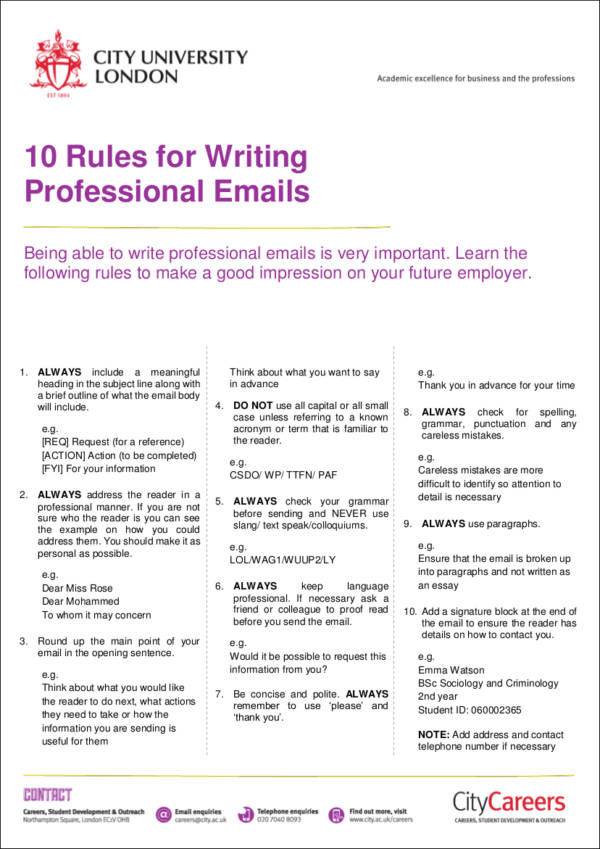
city.ac.uk
Who knew there were so many rules regarding professional emails, right? This sample professional email document will give you ten tips and tricks in making a good impression when it comes to emails.
Writing a Formal Email Sample
There is a difference when it comes to writing formal and informal letters. This document will help you differentiate between the two. It will also help you avoid making the mistake of sending informal emails in the workplace.
Email Writing Sample Format
Emails are the main means of communication between bosses and their subordinates. This sample professional email will break down the differences of formatting your emails. Make sure you check out this document.
We’re hoping you learned a thing or two about professional email and letter writing. It’s high time we apply these learnings in the workplace and help make relaying of messages more orderly and better.
Related Posts
Resignation Letter for Medical Samples & Templates
Letter of Intent Samples & Templates
Letter of Intent for a Job Samples & Templates
Lease Proposal Letter Samples & Templates
Letter of Inquiry Samples & Templates
Character Reference Letter Samples & Templates
Claims Letter Samples & Templates
Response Letter Sample & Templates
Follow Up Letter Samples & Templates
Sample Project Proposal Letter Templates
Donation Letter Samples & Templates
Addressing a Formal Letter Samples & Templates
Grievance Letter Samples & Templates
Sample Sponsor Thank You Letter Templates
Sample Letters of Request


